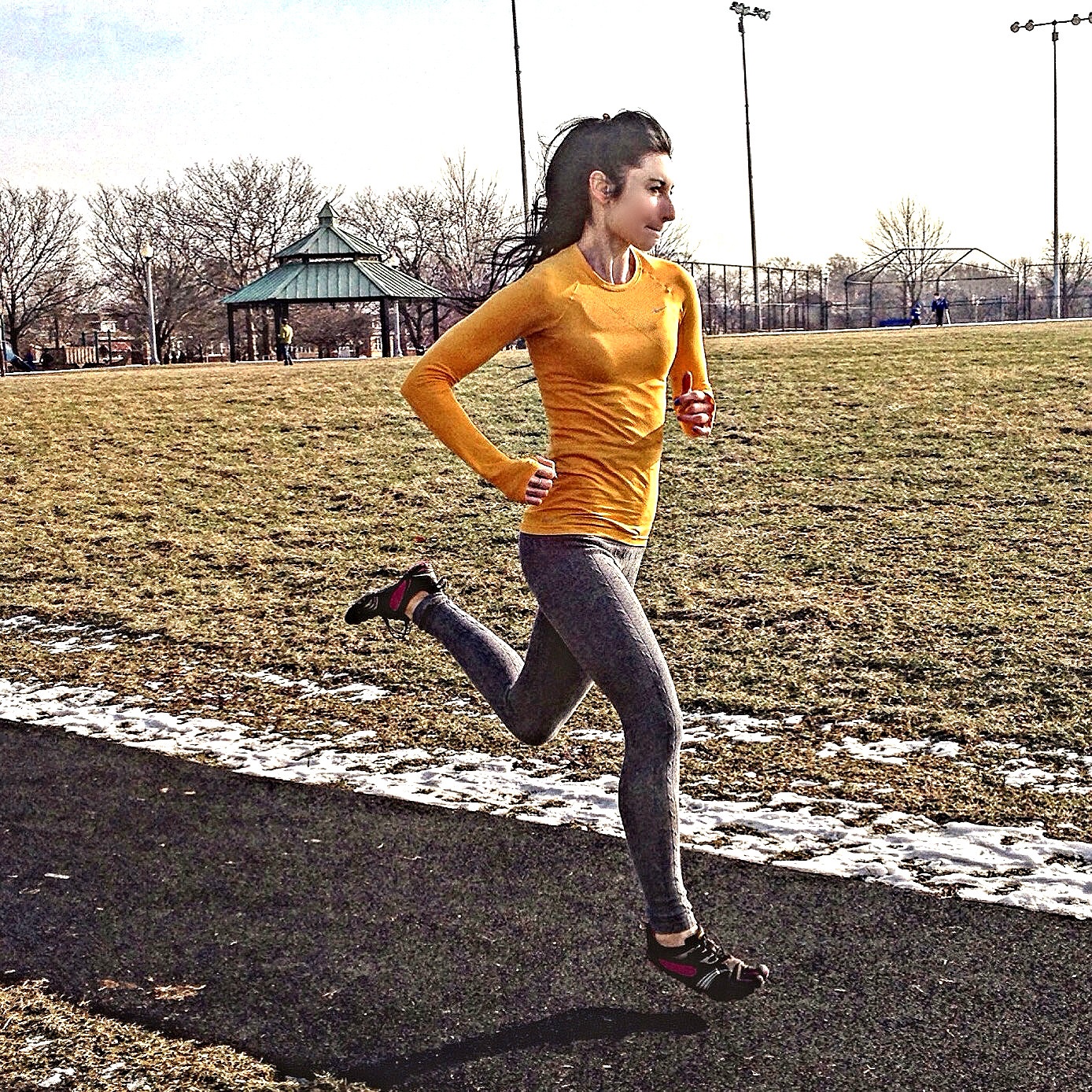Many studies have demonstrated that forefoot running is better for your shins, even preventing shin fracture, as it was found to consistently correlate with less all-around impact stress on the shins than heel strike running.
This is because landing forefoot-first during running was found to improve the position of shin at landing whereby the shin aligned more vertically at touchdown which reduced opposing forces, such as tibial (shin) acceleration in the vertical and anteroposterior (front and back) directions [1].
Even better, past reports have shown that high power tibial acceleration frequencies –a risk factor for tibial fracture – were lower in forefoot running than in heel strike running [2].

What is more, another study found that landing with a forefoot strike during running prompted sharp increases in pre-activations of the calf musculature which was directly related to greater shock attenuation (i.e. reduced shock) on the tibia which in turn led to a lesser fraction of tibial shock absorption as compared with heel strike running [1]. In other words, the calves play more of an active role in drawing impact away from the shin bone in forefoot running than in heel strike running.
Last but not least, forefoot running provides an additional layer of impact protection on the shins because it was found to engage a more compliant ankle-joint at landing. This was found to hold the foot more stable while tamping down impact shock on the tibia [4].
By these measures, forefoot running is hugely significant in the prevention of not only a tibial fracture, but other lower leg injuries such as shin splints and CECS.
In contrast, heel strike running puts the shins under stronger pressure at touchdown because striking heel-first while running tilts the tibia away from the upper body, or the center of mass (shown below) which causes the center of mass to crash head-on with the stance leg [3]. In this way, tibial shock and anteroposterior axis accelerations increase to exceed normal which causes the shins to dangerously overheat and become more vulnerable to pain and injury [4].

If you’ve enjoyed this article, you’ll love my content over at my YouTube channel, here, where I discuss more on the performance and injury prevention benefits of forefoot running vs heel strike running.
References:
[1]. Giandolini et al. Foot strike pattern and impact continuous measurements during a trail running race: proof of concept in a world-class athlete. Footwear Sci, 2015; 7(2):127-137.
[2]. Gruber, A.H., Boyer, K.A., Derrick, T.R., & Hamill, J. (2014). Impact shock frequency components and attenuation in rearfoot and forefoot running. Journal of Sport and Health Science
[3]. Giandolini, M., Arnal, P.J., Millet, G.Y., Peyrot, N., Samozino, P., Dubois, B., & Morin, J.B. (2013). Impact reduction during running: Efficiency of simple acute interventions in recreational runners. European Journal of Applied Physiology, 113(3), 599 -609.
[4]. Lieberman, D.E., Venkadesan, M., Werbel, W.A., Daoud, A.I., D’Andrea, S., Davis, I.S., . . . Pitsiladis, Y. (2010). Foot strike patterns and collision forces in habitually barefoot versus shod runners. Nature, 463(7280), 531-535.
If you’d like, you can support Run Forefoot by shopping for minimalist footwear from the following places:
Be Lenka: https://www.dpbolvw.net/click-7600968-14330828
Wilding Shoes: https://bit.ly/3lIygQP
Xero Shoes: http://bit.ly/2UIR9YK
Zappos: https://bit.ly/3agv5NG
Vivobarefoot: https://amzn.to/3wPRKIk
You can also show support and help keep Run Forefoot going by making a donation in any amount of your choosing: https://www.paypal.me/RunForefoot
Bretta Riches
BSc Neurobiology; MSc Biomechanics candidate, ultra minimalist runner & founder of RunForefoot. I was a heel striker, always injured. I was inspired by the great Tirunesh Dibaba to try forefoot running. Now, I'm injury free. This is why I launched Run Forefoot, to advocate the health & performance benefits of forefoot running and to raise awareness on the dangers of heel striking, because the world needs to know.
Latest posts by Bretta Riches (see all)
- Can You Run In Barefoot Shoes? Yes, But DON’T Heel Strike! - 21/07/2024
- Why Cushioned Running Shoes Are Really Bad for Your Feet - 19/07/2024
- Do Cushioned Running Shoes Cause Injuries? - 17/07/2024
